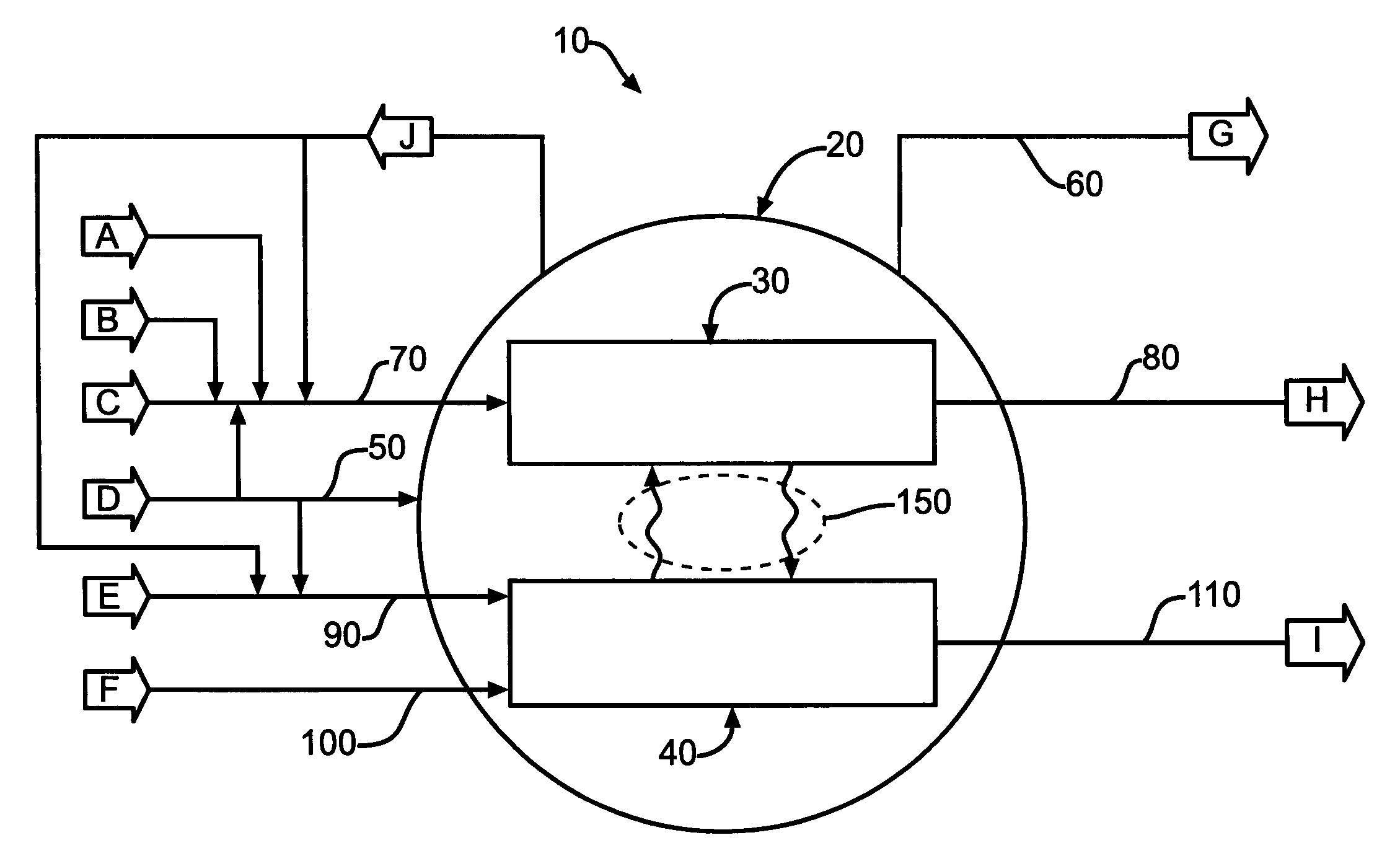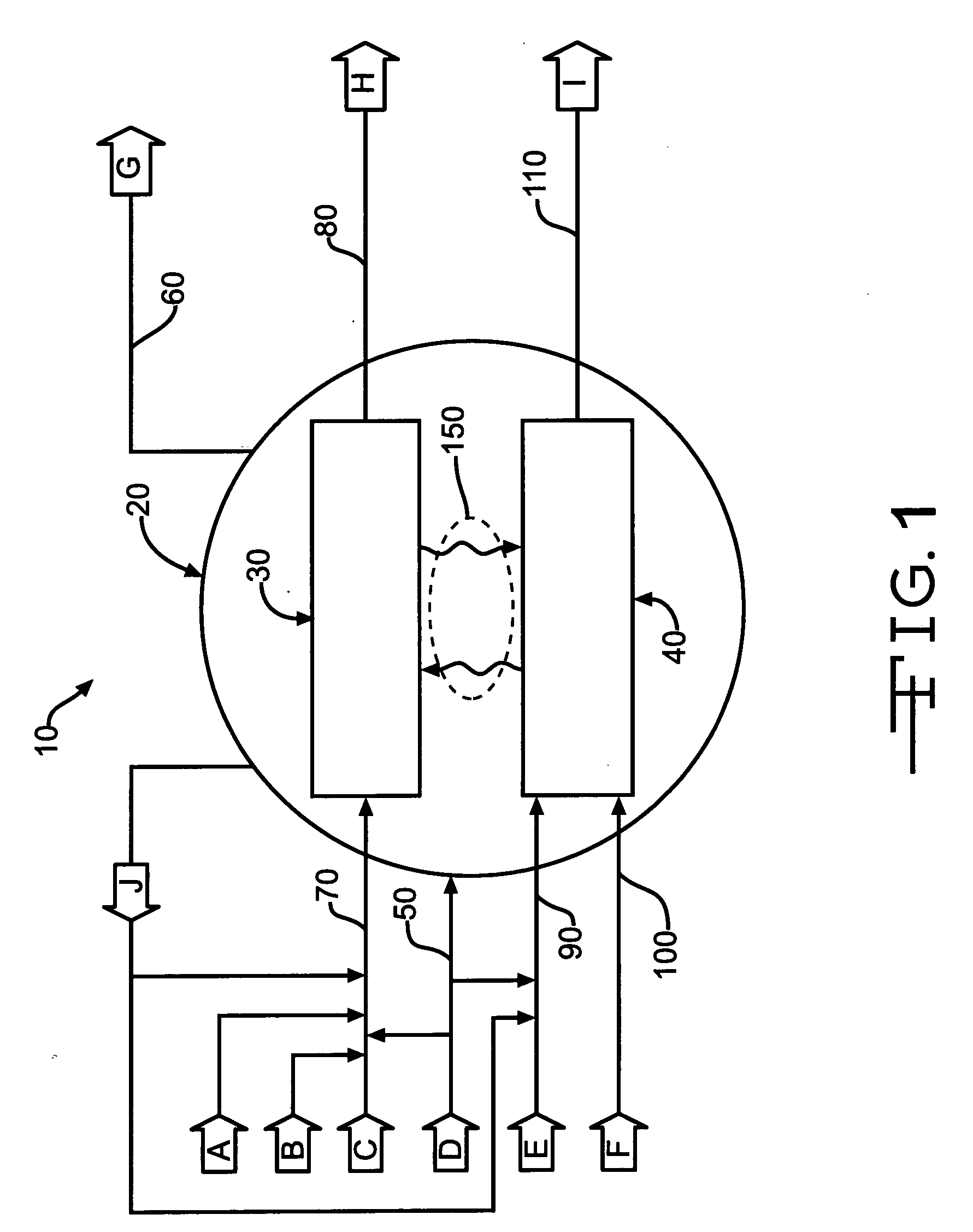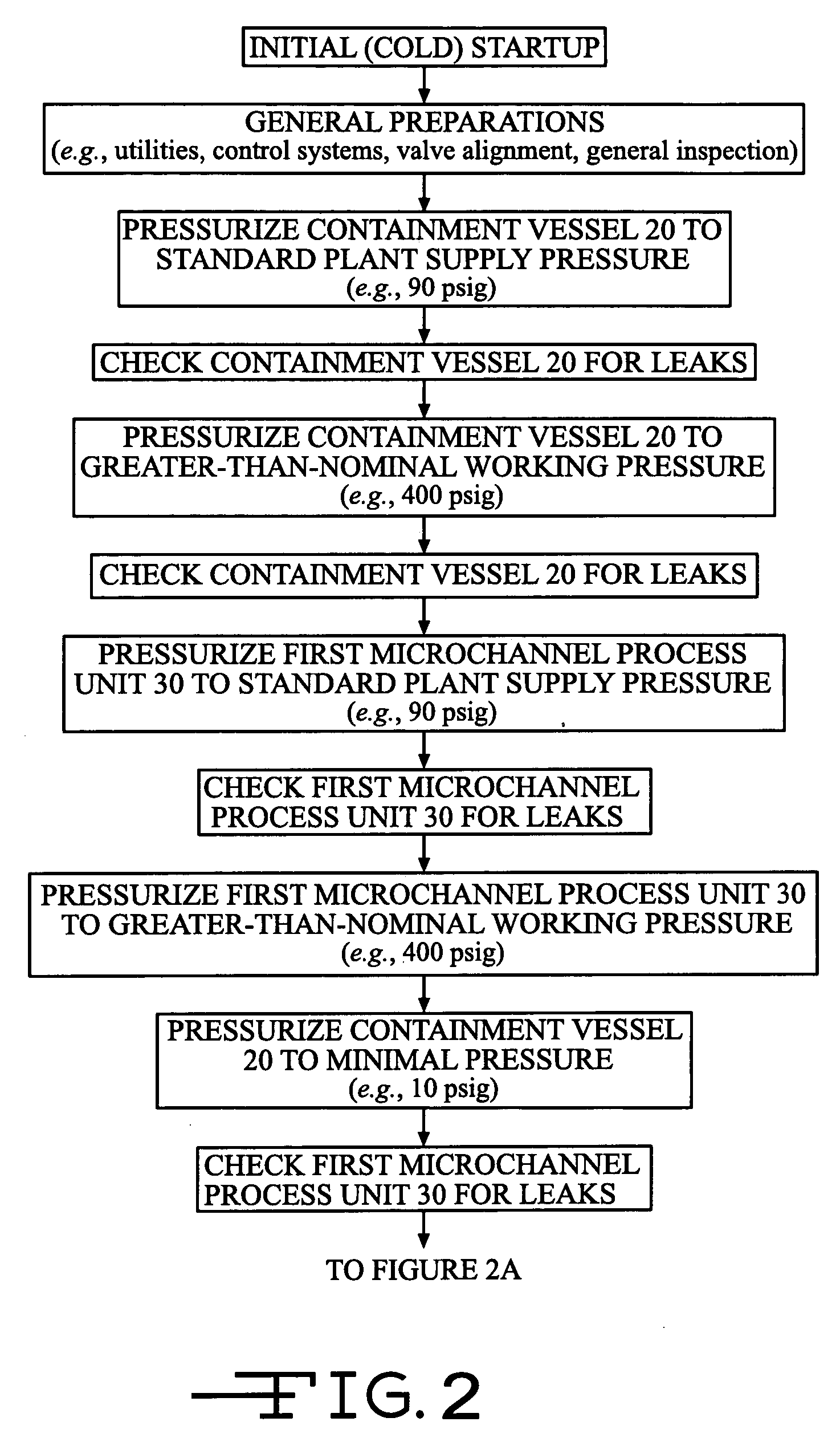Control of pressurized microchannel processes
a microchannel and process technology, applied in process and machine control, machine/engine, chemical production, etc., can solve the problems of increasing complexity, affecting the operation of the device, and reducing so as to increase the concentration of low-thermal energy density materials and reduce the proportion of diluen
- Summary
- Abstract
- Description
- Claims
- Application Information
AI Technical Summary
Benefits of technology
Problems solved by technology
Method used
Image
Examples
Embodiment Construction
[0020] The following reference indicators are provided as an aid to an understanding of the figures: [0021]10 microchannel process [0022]20 containment vessel [0023]30 first microchannel process unit [0024]40 second microchannel process unit [0025]50 containment vessel inlet [0026]60 containment vessel vent [0027]70 first microchannel process unit inlet [0028]80 first microchannel process unit outlet [0029]90 first process unit inlet to second microchannel process unit [0030]100 second process unit inlet to second microchannel process unit [0031]110 second microchannel process unit outlet [0032]150 process unit—process unit heat transfer [0033] A first reactant material [0034] B first catalyst activation material [0035] C second reactant material [0036] D pressurizing material [0037] E third reactant material [0038] F fourth reactant material [0039] G vented / flared material [0040] H first products material [0041] I second products material [0042] J purge material
[0043] Reference to...
PUM
| Property | Measurement | Unit |
|---|---|---|
| Time | aaaaa | aaaaa |
| Pressure | aaaaa | aaaaa |
| Time | aaaaa | aaaaa |
Abstract
Description
Claims
Application Information
 Login to View More
Login to View More - R&D
- Intellectual Property
- Life Sciences
- Materials
- Tech Scout
- Unparalleled Data Quality
- Higher Quality Content
- 60% Fewer Hallucinations
Browse by: Latest US Patents, China's latest patents, Technical Efficacy Thesaurus, Application Domain, Technology Topic, Popular Technical Reports.
© 2025 PatSnap. All rights reserved.Legal|Privacy policy|Modern Slavery Act Transparency Statement|Sitemap|About US| Contact US: help@patsnap.com



